Chameleons’ astounding color-changing skin and lightning-fast tongues make them one of the most unusual lizards in the world. Yet, did you know that one type of chameleon lives for longer in an egg than outside it? Or that their bones glow in the dark? Let’s jump into our list of ten incredible chameleon facts:
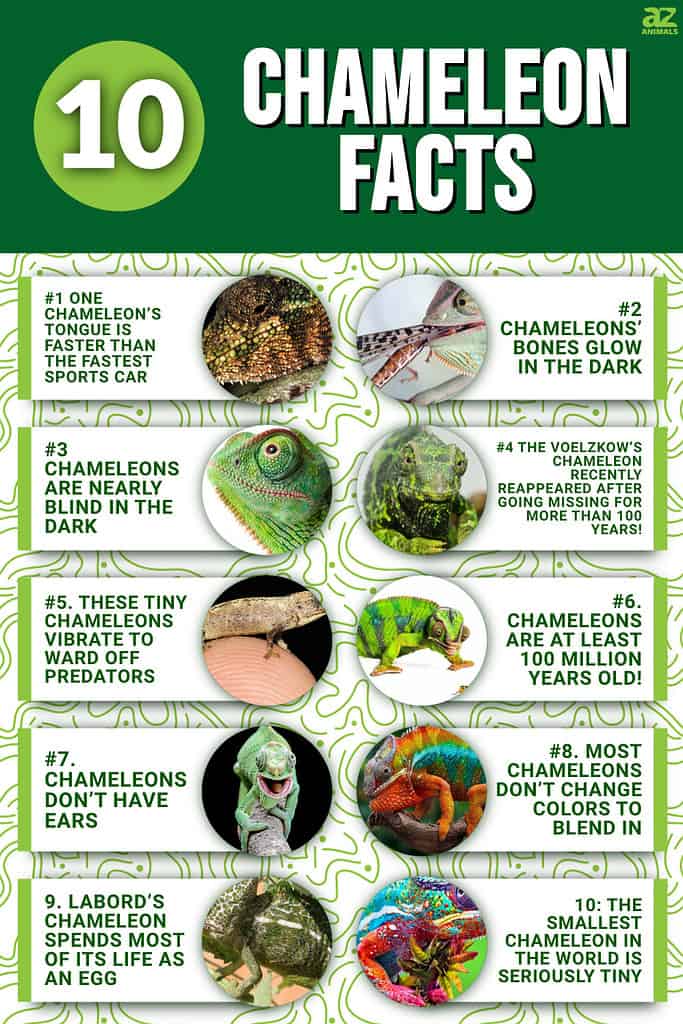
10: The Smallest Chameleon in the World is Seriously Tiny
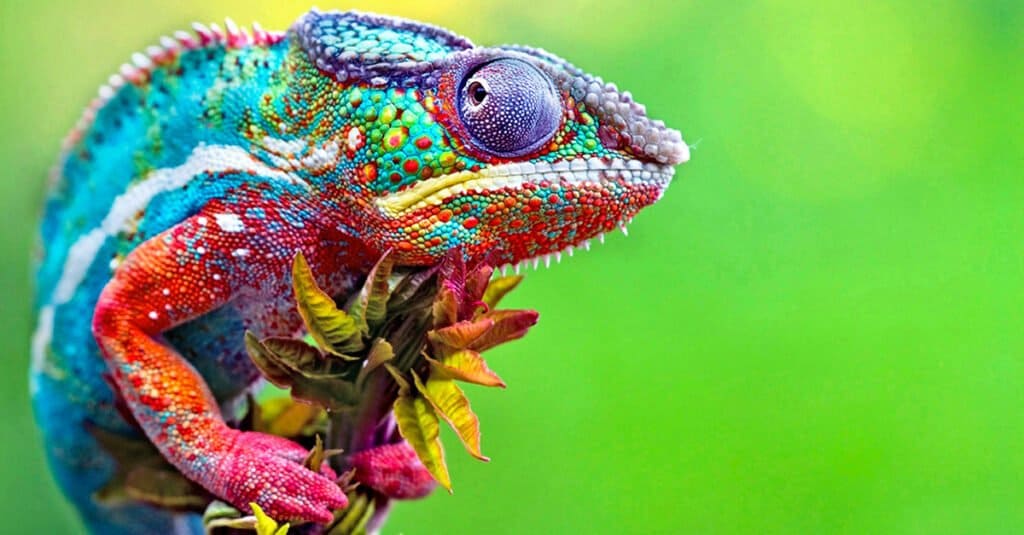
Chromatophores are the color-changing pigments chameleons use to regulate their body temperature.
©Graphics Illuminate/Shutterstock.com
Brookesia nana is the tiniest chameleon species of all and is so tiny that its entire body could fit on your fingertip. About the size of a sunflower seed, scientists believe their small size is due at least in part to miniaturization, an evolutionary process that animals go through to adapt to environments with diminished amounts of space or resources.
There have only been two sightings of Brookesia to date: one male and one female. Scientists confirmed these animals were adults by observing the female’s ovaries, where eggs were found, and the shape of the male’s genitals, which determines the age of chameleons.
9. Labord’s Chameleon Spends Most of Its Life as an Egg

Labord’s chameleon has the shortest lifespan of all land vertebrates, spending more of its lifetime incubating than outside of its egg.
©irinaroma/Shutterstock.com
Labord’s chameleons spend more time incubating than they do in the wild! These incredible creatures spend eight to nine months developing before hatching, only to spend a surprisingly short life of four to five months outside of their eggs.
Their entire lifespan of just 12 to 14 months makes them one of the shortest-living animals on the planet!
#8. Most Chameleons Don’t Change Colors to Blend In
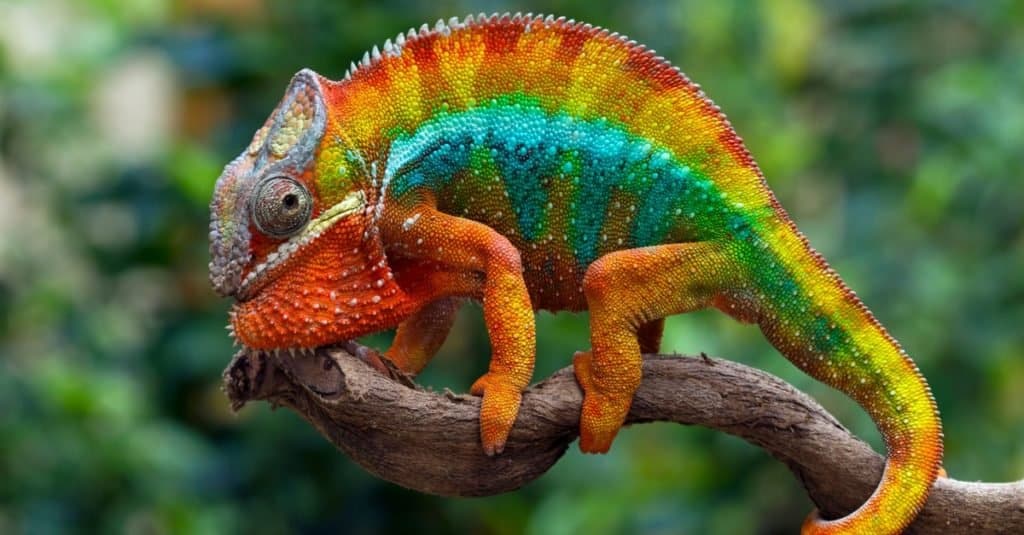
Panther chameleons do well in captivity. It is second to only the
veiled chameleon
as the species of chameleon most bred in captivity.
©Kurit afshen/Shutterstock.com
If you’ve ever seen Monsters Inc, you know Randall, the chameleon-like lizard that changes his color to hide from unsuspecting children. You might be surprised to learn, though, that chameleons don’t just change their color to blend into their surroundings.
In fact, many chameleons are limited to just a few colors, which makes blending into unlimited backgrounds impossible.
Chameleons can also use their extraordinary color-changing abilities to communicate with other chameleons, reflect their mood, and even regulate their body temperature!
#7. Chameleons Don’t Have Ears

Because chameleons lack ears, they must rely on feeling vibrations to identify threats around them.
©Agus_Gatam/Shutterstock.com
Chameleons possess the incredible ability to feel sounds. Since they lack ears and eardrums, they must instead rely on feeling vibrations to identify threats in the world around them. They can hear some sound, but not much – they can only detect sounds at frequencies between 200-600 hertz.
That means if you wanted to talk to a chameleon, you would have to do so in a specific pitch for them to hear!
#6. Chameleons Are at Least 100 Million Years Old!

A
chameleon getting ready to eat
!
©Eric Isselee/Shutterstock.com
Fossils found by scientists in 2016 suggest that chameleons date back to the time of dinosaurs!
One lizard found trapped in amber that dates back 100 million years at minimum – that’s an astounding 78 million years older than specimens found before. This prehistoric chameleon did not have the fused toes of today’s chameleons, but clues in its jaw indicated that it shared the projectile tongue.
#5. These Tiny Chameleons Vibrate to Ward Off Predators

The
Brookesiachameleon, one of the tiniest chameleons in the world, vibrates its body to defend itself.
©Frank Glaw, Jörn Köhler, Oliver Hawlitschek, Fanomezana M. Ratsoavina, Andolalao Rakotoarison, Mark D. Scherz & Miguel Vences / Creative Commons – License
Brookesia and Palleon chameleons are among the tiniest chameleons in the world, measuring at 3 inches or smaller. Due to their small size and inability to change color, their evolutionary traits allow them to defend themselves in a different way: by vibrating their bodies.
Scientists believe that these chameleons use vibration to startle enemies into dropping them. It is thought that these vibrations originate in the muscles between a chameleon’s ribs.
#4 The Voelzkow’s Chameleon Recently Reappeared After Going Missing for More Than 100 Years!

Female Yellow-Crested
Jackson’s Chameleon
©Jason Mintzer/Shutterstock.com
If you’ve ever lost something for a long time, you can relate to the excitement that scientists probably felt after finding a chameleon that hadn’t been spotted in more than 100 years! Much to their surprise, this chameleon wasn’t found in the forest; instead, they found three males and 15 females in an overgrown hotel garden in Madagascar.
#3 Chameleons are Nearly Blind in the Dark

The eyes of a chameleon mostly view the world by color, so their vision is greatly challenged in the dark.
©Kuttelvaserova Stuchelova/Shutterstock.com
Have you ever experienced temporary blindness when you walk out of a bright room and into a dark one? This is the chameleon’s experience each night, except their eyes never adjust to the darkness. Since the photoreceptors in their eyes are made up of more cones than rods, the way they see the world is mostly by color with not much contrast at all. This means that when it’s dark outside, their eyesight is greatly diminished, near to blindness.
#2 Chameleons’ Bones Glow in the Dark
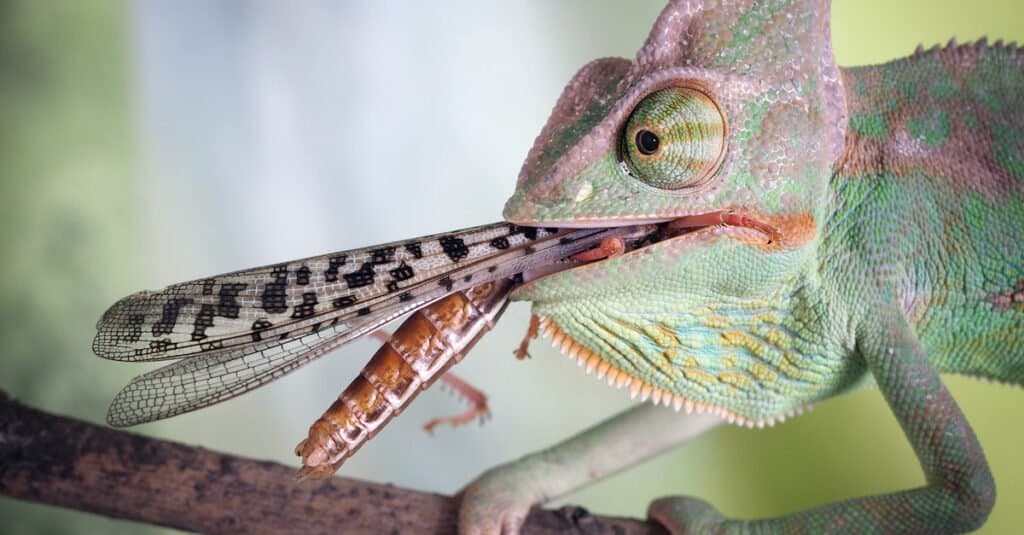
A chameleon feasting on a
dragonfly
©Irina Kozorog/Shutterstock.com
Have you ever seen a velvet poster glow under a blacklight? That’s what scientists realized chameleon bones could do under UV light. During the study, scientists discovered that when exposed to UV light, chameleons’ bones shone different shades of blue, visible through their skin. If that wasn’t exciting enough, they also observed entire patterns across chameleons’ skin that weren’t visible to the naked eye.
This is even more interesting because chameleons can see UV light with the naked eye, an ability that humans lack. This suggests that chameleons see each other in an entirely different light than we do – no pun intended.
#1 One Chameleon’s Tongue is Faster than the Fastest Sports Car
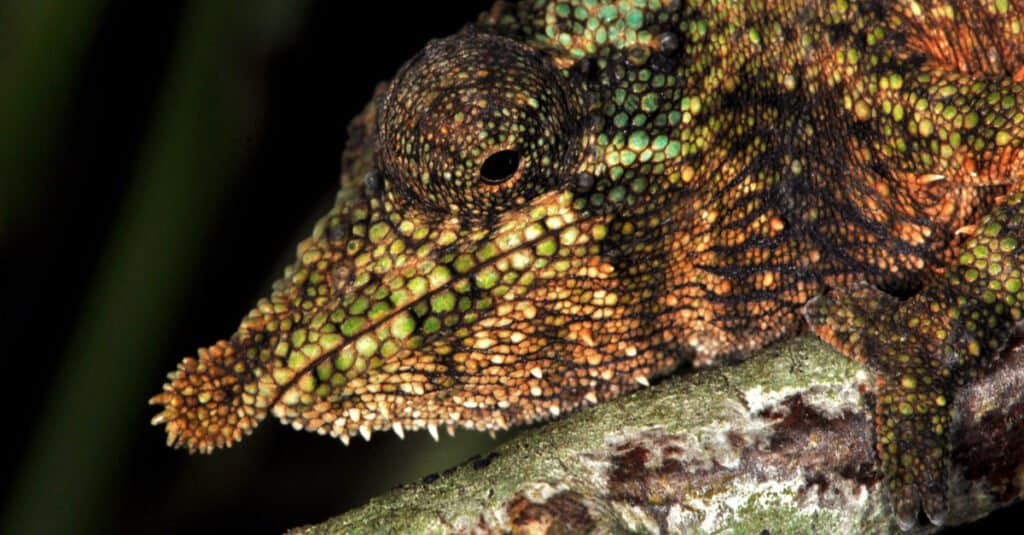
A rosette-nosed chameleon
©Ferdy Timmerman/Shutterstock.com
The rosette-nosed pygmy might be tiny, but its tongue packs a powerful punch. Launching at an impressive 8,500 feet per second, the speed of this chameleon’s tongue is faster than space shuttles and jet fighters.
What’s even more interesting is that the speed of this chameleon’s tongue makes it among the animals with the fastest capability for acceleration on the planet.
The photo featured at the top of this post is © Kurit afshen/Shutterstock.com
Thank you for reading! Have some feedback for us? Contact the AZ Animals editorial team.






